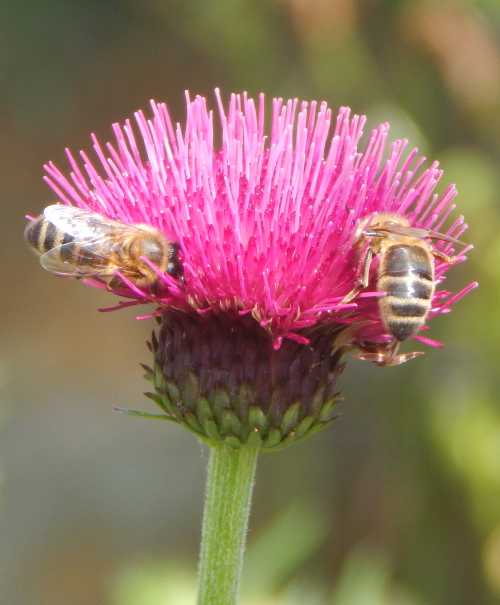Festooning Bees
A colony of honey bees is a superorganism that exhibits many fascinating and sometimes baffling behaviours.
One interesting phenomenon sometimes witnessed, is called 'festooning'.
What Is Bee Festooning?
"A festoon is a cluster of bees hanging attached to one another; it resembles a curtain and often surrounds an area where comb is under construction."
- Smith et al, 20171
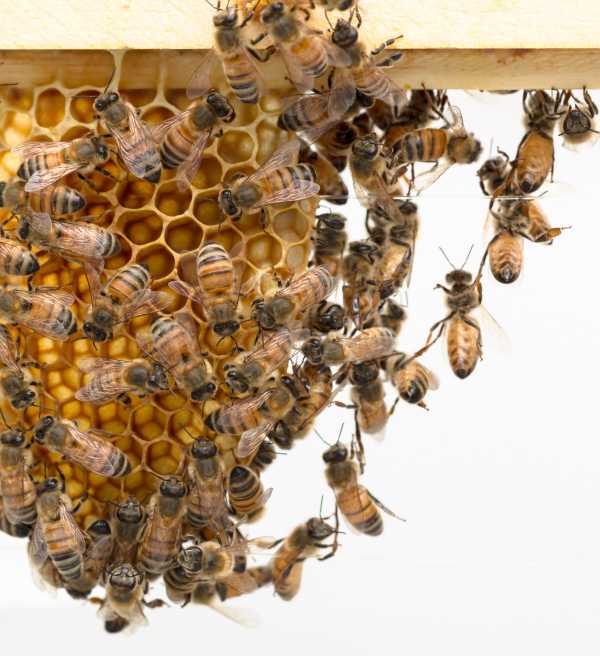
Festooning is when honey bees link together to form a mesh, almost 'lace-like' structure composed of single 'chains'. They create this structure literally by hanging on to each other with their feet.
Festooning can typically be seen when honey bees co-operate, seemingly to bridge a gap, perhaps between combs or frames.
Festooning is sometimes observed by beekeepers whilst managing their hives, particularly when they slowly separate 2 adjacent frames. When the frames are separated, the single chains can be seen between the frames.
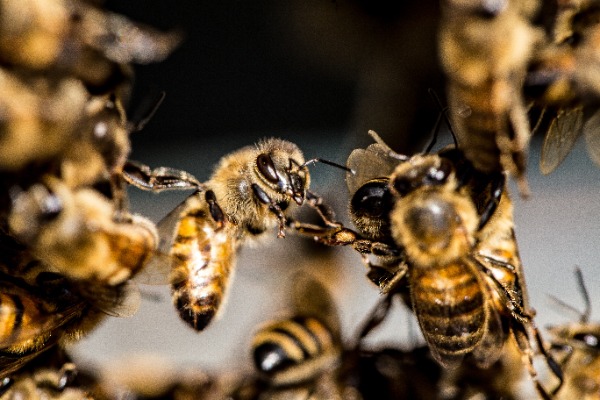
This phenomenon also occurs in natural nests, for example found in tree hollows.
Why do honey bees engage in festooning?
“The function of the living chain that is formed by bees where new combs are being built, or old combs repaired, is completely unknown.”
- Dr Jürgen Tautz, 'The Buzz about Bees: Biology of a Superorganism'
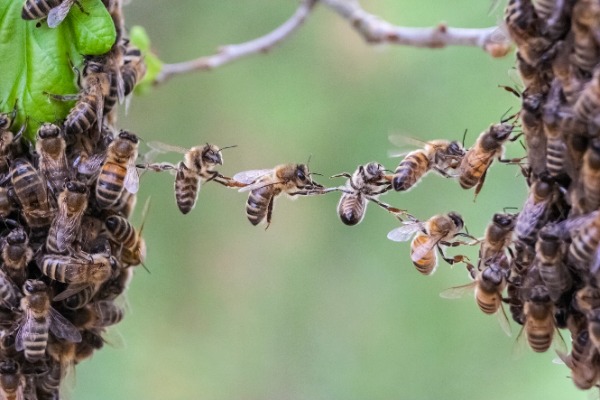
Scientists have, as yet, no definitive answer as to why honey bees engage in festooning, and so the behaviour remains a mystery.
However, various theories have emerged.
1. Wax comb construction
Primarily, it is believed that festooning aids comb building3.
2. Maintaining even temperature
It is proposed that the cluster formed by multiple chains into a festoon, helps maintain a fairly constant temperature that is conducive to creating and manipulating wax4,5.
3. Protection
Retired 'bee scientist' Dr Jürgen Tautz, (author of 'The Buzz about Bees: Biology of a Superorganism'2) states that when bees construct combs freely in tree hollows, they form a sort of mesh 'bag' of interlocked bees on the ceiling of the nest hollow6.
Tautz, notes that a 'mesh' of bees may remain in place after the comb has been constructed6.
Tautz also notes that the 'mesh' of bees can at times be tight or loose, but in any event, is flexible.
He speculates that this flexible mesh structure may perform a protective function and help to regulate the climate inside the nest or hollow6.
Festoons and wax comb construction
"The combs of honeybees are time-frozen records of what transpired within festoons where building is done".
- Hepburn and Whiffler, 19913
The building of wax combs is a precise process, not only in terms of the dimensions and proportions of the hexagonal cells, but also in gravitational orientation.
Within a comb, cell size and orientation vary independently and are unique to each festoon and comb3.
Instead of building a single comb together, several festoons begin at independent sites. Bees then connect the combs later with some irregular transitional cells3.
When construction begins, the workers cling together in elongated chains or festoons, forming a dense cluster that facilitates an even temperature for wax secretion and manipulation4,5.
In view of the above, we may glean that festooning forms part of the communication between workers during comb construction.
Which bees in a colony engage in festooning?
The worker females with active wax glands create festoons in a colony.
A 2017 study by Smith et al1 found no significant difference in frequency of being in a festoon when 2 different age groups were compared:
- bees in the younger group were 7 days old on the first day of data collection
- bees in the older group were 15 days old on the first day of data collection.
Although the study found there were slightly more older bees in festoons in larger colonies.
In their 2017 study, Smith et al1 noted bees in festoons more frequently in larger colonies than in smaller colonies.
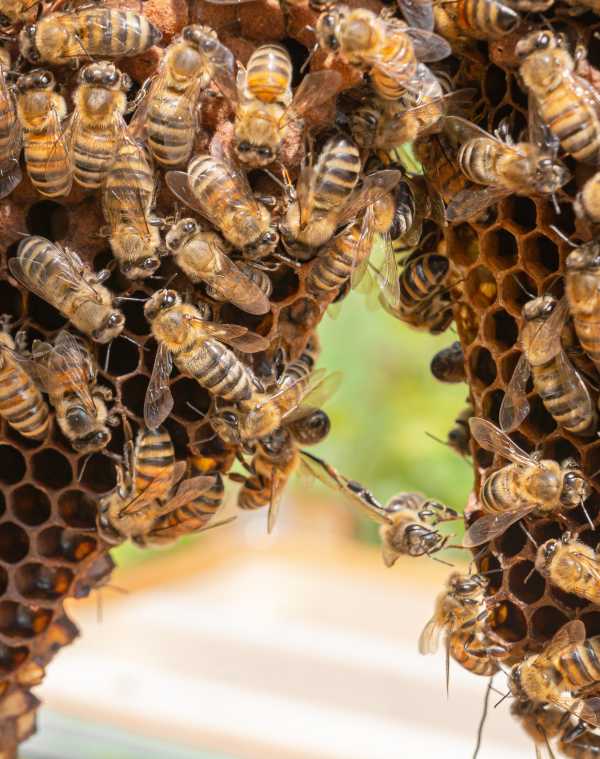
Watch bees festooning
I'll leave you with a video of bees festooning, and below that, a final quote from Dr Jürgen Tautz.
Festooning is certainly beautiful and intriguing. What do you think?
"At this stage of comb building, a large number of bees form living chains between the edge of the comb under construction, and the wall of the hollow. They link their legs with one another and remain hanging, motionless for long periods of time.
The meaning of this striking behaviour is completely unkown.
Do they serve as a rope ladder for bees that collect wax scales that have fallen to the floor, and bring these up to the building site? We do not know."
- Dr Jürgen Tautz, 'The Buzz about Bees: Biology of a Superorganism'
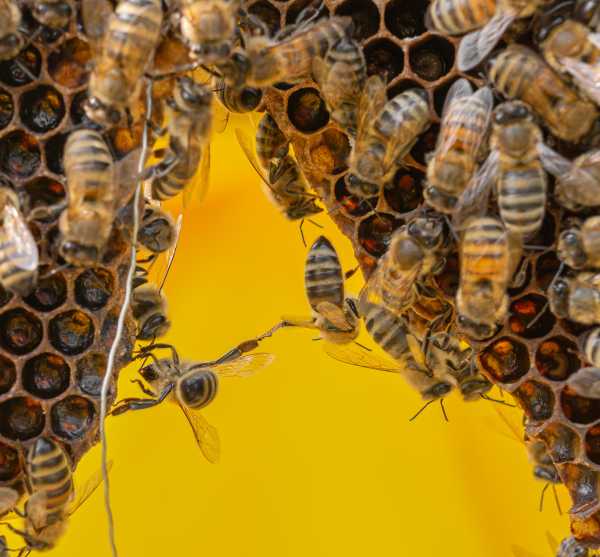
References
1.Michael L. Smith, Phoebe A. Koenig, Jacob M. Peters; The cues of colony size: how honey bees sense that their colony is large enough to begin to invest in reproduction. J Exp Biol 1 May 2017; 220 (9): 1597–1605. doi: https://doi.org/10.1242/jeb.150342
2. The Buzz about Bees: Biology of a Superorganism by Jürgen Tautz.
3. Hepburn, H. R., and Whiffler, L. A. (1991). Construction defects define pattern and method in comb building by honeybees. Apidologie 22, 381–388. doi: 10.1051/apido:1991040
4. Yang, M.-X., Tan, K., Radloff, S. E., Phiancharoen, M., and Hepburn, H. R. (2010). Comb construction in mixed-species colonies of honeybees, Apis cerana and Apis mellifera. J. Exp. Biol. 213(Pt 10), 1659–1664. doi: 10.1242/jeb.035626.
5. Hepburn H. R. (1986).Honeybees and Wax: An Experimental Natural History. Berlin: Springer-Verlag.
6. Bee scaffolding and bio heaters: New research reveals hidden beehive behaviours | BBC Science Focus Magazine; July 2021.
If you found this page helpful or interesting, I'd really be grateful if you would share it with others - if not this page, perhaps another, such as Gardening For Bees.
Thank you so much :) .
